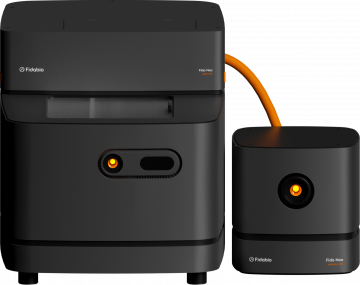Control over the environment as a means to increasing the clinical relevance of findings
An advanced approach to characterising molecular interaction kinetics involves more than just determining the basic rate constants of association (kon) and dissociation (koff). It is a comprehensive process that examines these interactions across various conditions, aiming to reveal the allosteric effects and conformational dynamics that are central to the molecular interaction network.
Understanding the balance between molecular interaction stability and flexibility is fundamental. This balance is influenced by environmental variables like pH, temperature, and ionic strength and is pivotal for the proper functioning of cellular systems and signalling pathways. Thus, having control over those parameters during association and dissociation measurements is critical for obtaining environmentally relevant data. New generation of FIDA allows the users to free themselves from environmental constraints related to immobilisation, while staying in control with flexible assay design and embedded QC Module.
The advancement of in-solution techniques is a evolutionary leap in technology due to their enhanced accuracy and minimal environmental constraints.
True Representation of Molecular Dynamics
In-solution kinetic analysis allows molecules to interact freely, without the constraints imposed by surface immobilisation. In other words, with FIDA as there is no interaction with the surface all binding sites remain free for ligand binding. This unrestricted environment ensures that the measured kinetic parameters truly reflect the natural behaviour of molecules as they would occur in a biological system. By avoiding the potential conformational changes and non-specific interactions induced by surface attachment, in-solution methods provide a more accurate depiction of both the speed of molecular association and the stability of the resulting complexes.
Advantages of FIDA In-solution Kinetics Over Surface-Based Techniques
1. Elimination of Non-Specific Binding: Non-specific binding to surfaces can significantly distort koff measurements in surface-based assays, either by trapping molecules on the surface or altering the effective concentration of interacting partners. In-solution methods such as FIDA circumvent these issues by maintaining molecules in a free state of flow, leading to more reliable dissociation rates.
2. No regeneration: Since in-solution methods do not involve surface chemistry, surface regeneration is not an issue.
3. Flexibility in Experimental Conditions: The ability to easily modify experimental conditions such as pH, ionic strength, temperature and the presence of cofactors is a significant advantage of FIDA’s in-solution assays. This flexibility allows for a comprehensive understanding of how various factors influence Kon and Koff, facilitating a deeper insight into the conditions that affect molecular interactions.
4. Applicability to Various Molecular Sizes and Types: Unlike some surface-based techniques that may be limited by the physical characteristics of the molecules, in-solution kinetic analysis of FIDA is versatile, accommodating a wide range of molecular sizes and types including small particles and lipid-nanoparticles.
Enhancing Physiological Relevance
The physiological relevance of FIDA kinetic measurements obtained through in-solution methods cannot be overstated. By mirroring the actual conditions under which biological interactions occur, FIDA ensures that the kinetic parameters measured are directly applicable to understanding biological processes. This biomimicry is especially crucial in the development of therapeutic interventions, where accurate kinetic data can inform the design of drugs that effectively target specific molecular interactions. Achieving physiological similarity in-vitro can improve control over quality of the candidates for clinical trails.
Artifact-free environment
The kinetic analysis of molecular interactions benefits significantly from in-solution methods. By providing a dynamic and artifact-free environment, these techniques ensure that the measured kon and koff rates accurately reflect the natural behavior of molecules. The elimination of non-specific binding, combined with the flexibility to adjust experimental conditions and applicability to a diverse range of molecules, is a commencement of a new era in the biochemical research. As we continue to explore the complexities of molecular interactions, the insights gained from in-solution studies will undoubtedly play a crucial role in advancing our understanding of biological systems and the development of new therapeutic strategies.
Read more











